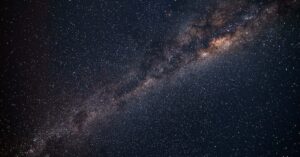This site contains affiliate links to products. I may receive a commission for purchases made through these links.
I’ve always been a fan of gazing up at the stars. There’s something magical about the infinite expanse of the universe, and San Diego’s clear skies make it one of the best places for stargazing. Whether you’re a seasoned astronomer or just enjoy the simple beauty of a starlit night, you’ll find a spot that suits your needs.
San Diego is home to numerous parks, observatories, and open spaces that are perfect for stargazing. From the city’s bustling downtown to its serene outskirts, there’s a stargazing spot for everyone. So, let’s dive right in and explore the best places for stargazing in this beautiful city.
Balboa Park
Balboa Park, hands down, it’s an all-time favorite for stargazers. Often overlooked for its galleries, zoos, and museums, the park is a dark haven in the midst of the city.
Covering over 1200 acres, Balboa Park is huge! When night falls and the city lights start to glitter, the vast open skies make it a top spot for stargazing. Surrounded by canyons and green foliage, I’ve found it easy to forget I’m in the bustling city of San Diego when I’m gazing at constellations above.
What sets Balboa Park apart is its unique offering – the Reuben H. Fleet Science Center. It houses the world-renowned Irene P. Flinn Sky Theater. This impressive dome theater is where the magic happens. With a state-of-the-art IMAX projection, it brings the starry universe to life. You might be admiring supernova remnants in distant galaxies one moment and tracing the formation of our Milky Way the next.
Wouldn’t you want to experience that?
But it doesn’t stop there. The Science Center also packs an interactive science exhibit. You can delve deep into astronomical wonders and explore the mysteries of the cosmic world. It’s a place where kids and adults can satisfy their curiosity about the universe.
Sure, the park’s open skies are brilliant for stargazing on clear nights. But the Science Center is perfect when the weather isn’t cooperating. And bonus, the center is open year-round!
A table to illustrate these features:
| Balboa Park features for stargazing | Availability |
|---|---|
| Open Skylines for Stargazing | Yes |
| Irene P. Flinn Sky Theater | Yes |
| Interactive Science Exhibit | Yes |
| Year-round access | Yes |
With this in mind, make Balboa Park your next stargazing spot in San Diego. Seize the opportunity, whether it’s laying on the grass, looking up at the open sky or embarking on an astronomical journey in the Science Center. This is one adventure you don’t want to miss.
Mount Laguna Observatory
Shifting our gaze from Balboa Park, another noteworthy locale comes into focus: Mount Laguna Observatory. Perched high in the mountains of the Cleveland National Forest, 60 miles east of downtown San Diego, this world-class observatory has been attracting space enthusiasts since its establishment in 1968.
Why drive all that 60 miles from the bustling city to the quiet mountaintop? Well, it’s not just about the impressive array of telescopes, which are amongst the finest in the world. They are worth the journey, of course, but that’s not everything Mount Laguna Observatory has to offer. It also provides one of the darkest night skies in Southern California.
| Distance from Downtown San Diego | Establishment Year |
|---|---|
| 60 miles | 1968 |
Away from light pollution, the observatory offers an unparalleled viewing experience. It’s from this vantage point I have seen galaxies, nebulae, and star clusters clearly and brightly; a sight that would be merely a faded sparkle in the city’s vibrant canvas.
Visit Mount Laguna on a new-moon night for a truly celestial experience. The observatory frequently hosts public viewing nights, allowing visitors a peek through their mammoth telescopes. It’s an opportunity to see distant stars, constellations, and cosmic phenomena through the lens of highly sophisticated equipment, an experience both educative and enthralling.
While visiting, take a moment to admire the observatory’s architecture. The visitor’s area is cozy and inviting with ample space. Additionally, the staff are wonderful. Their extensive knowledge of astronomy is infectious; they’re eager to discuss their observations and answer any questions you might have.
Make sure to check the weather conditions before you plan your visit. The observatory is located at a higher altitude, and weather plays a significant role in visibility. So, keep an eye out for clear, star-studded nights which make for the best stargazing.
Visiting Mount Laguna Observatory will not only satisfy your curiosity for celestial exploration but also instill a deeper appreciation for the grandeur of the universe. Now, let’s journey onward to our next stargazing spot.
Anza-Borrego Desert State Park
Venturing further inland from Mount Laguna, you’ll find another stargazing hot spot, the Anza-Borrego Desert State Park. Renowned as a Dark Sky Place by the International Dark Sky Association, this park boasts some of the clearest skies perfect for stargazing.
Spanning over 600,000 acres, Anza-Borrego is the largest state park in California. It is bereft of city lights, traffic noise, and extensive human activity. So, it serves as an excellent canvas for the night’s celestial artwork.
I’ve been to Anza-Borrego numerous times and each visit leaves me in awe. The magic starts as soon as the sun sets. The darkening horizon takes on hues of fiery orange and deep indigo, before everything eventually dissipates, giving way to a vast, starry night sky.
The park also offers stargazing programs led by experts. They use high-quality telescopes to give you a closer look at constellations, shooting stars, planets, and galaxies. It’s also not uncommon to spot a few satellites passing by!
| Important information | Details |
|---|---|
| Location | Borrego Springs, San Diego County, California |
| Park Size | 600,000 acres |
| Renown | Dark Sky Place by the International Dark Sky Association |
While it’s a bit of a drive from downtown San Diego, the experience at Anza-Borrego is well worth the journey. You’re guaranteed an undisturbed, tranquil night under the stars like nowhere else.
As with any night sky watching activity, ensure you check the weather forecast beforehand. Cloud cover and moon phase can make a difference in your stargazing experience.
Remember, Anza-Borrego doesn’t only offer night sky wonders. By day, you’ll also find unique flora and fauna, desert landscapes, and hiking trails catering to all levels of health and fitness. It’s a beautiful destination that I recommend to all star-lovers and adventurous souls.
Overall, a trip to Anza-Borrego Desert State Park promises a phenomenal mixture of astronomical wonder and terrestrial beauty. Enjoy the stars, the vast desert landscape, and the wildlife. All beneath one of the clearest, most magnificent skies you’ll ever encounter.
Cabrillo National Monument
Moving down the list, we find ourselves at the historic Cabrillo National Monument. It’s another great spot for stargazing giving you fairly clear skies with some of San Diego’s rich history as a backdrop. Nestled on San Diego’s Point Loma Peninsula, the national monument provides striking views of the city, Pacific Ocean, and of course, the night sky.
What makes this place unique for stargazing are the minimal light pollution and altitude. It’s an elevated observation point almost 400 feet above the surrounding areas. This allows for clearer skies with less atmospheric distortion than you’d find in the city. You’re quite likely to see meteors shooting across the sky if you’re lucky.
The Cabrillo National Monument does close at 5:00 PM most days. However, it opens its doors after dark several times a year for special stargazing events. These events often feature astronomers with telescopes, ready to guide you through the celestial wonders. Mark these dates on your calendar, as they’re not an opportunity to pass up.
Additionally, while at Cabrillo National Monument, the daytime also offers attractions. You can explore the historic lighthouse, Old Point Loma Lighthouse, hike the trails, or tidepool when the tide’s low. Also, don’t forget about the monument itself, a tribute to Juan Rodriguez Cabrillo, the first European to land on the West Coast of the US.
So for those not just interested in the skies but also in San Diego’s rich history, the Cabrillo National Monument is an excellent place to visit. Let’s also not forget, unlike our first two spots, this place gives you an incredible view of San Diego city, which only adds to your overall experience.
Now time to lift our eyes to the sky at the next location. It’ll promise us some more clear, compelling views.
Torrey Pines State Natural Reserve
A less-known yet equally astonishing spot for stargazing in San Diego is Torrey Pines State Natural Reserve. Tucked between La Jolla and Del Mar, it’s an excellent sanctuary away from the city’s light pollution. It doesn’t get any better than lying on the beach or perching atop a cliff, gazing up at the glittering night sky.
This reserve is one of the last remaining salt marshes and waterfowl refuges in Southern California. Its 2,000 acres of rugged coastal area offers plenty of outdoor activities like hiking, bird watching, and guided nature walks in the daytime. But it’s when the sun dips below the horizon that the real magic happens.
Stargazing at Torrey Pines is not just serene, but also deeply educational. So take a break from city life, grab a blanket, some snacks, and a telescope if you have one. You’ll find yourself marveling at the stunning spectacle of celestial wonders above. Whether you’re a seasoned star gazer or a curious novice, the reserve provides an incredible stargazing backdrop.
Mark your calendar for the new moon phases. You’ll encounter the darkest skies and the most stars at this time. You may even catch a glimpse of the Milky Way on exceptionally clear nights. It’s an experience hard to match elsewhere.
Torrey Pines’ commitment to conservation extends to limiting light pollution, making it a prime stargazing location. It’s important to note that the Reserve closes at sunset so plan your visit accordingly. Scope out the special times in the year when they are open after dark for stargazing events. These events are guided by astronomers who’ll guide you to understand the night sky better.
With such natural beauty both terrestrial and celestial, Torrey Pines State Natural Reserve is a gem to explore. From its salt marshes to its star-studded skies, this distinctly calm place offers a one-of-a-kind stargazing experience in the midst of bustling San Diego. It doesn’t matter if you’re a local or a tourist, stargazing here offers an unforgettable cosmic journey without even needing to leave Earth.
Conclusion
So, there you have it. Torrey Pines State Natural Reserve is a top-notch stargazing spot in San Diego, blending tranquility, education, and natural beauty. It’s the perfect escape from city lights where you can immerse yourself in the cosmic wonders. While it’s usually closed at sunset, don’t forget to check out their special after-dark events throughout the year. These are guided by astronomers, offering a stellar journey that’s truly out of this world. Whether you’re a seasoned stargazer or a newbie to the cosmos, this reserve promises an unforgettable experience. So grab your telescope, head to Torrey Pines, and let the stars light your way.




